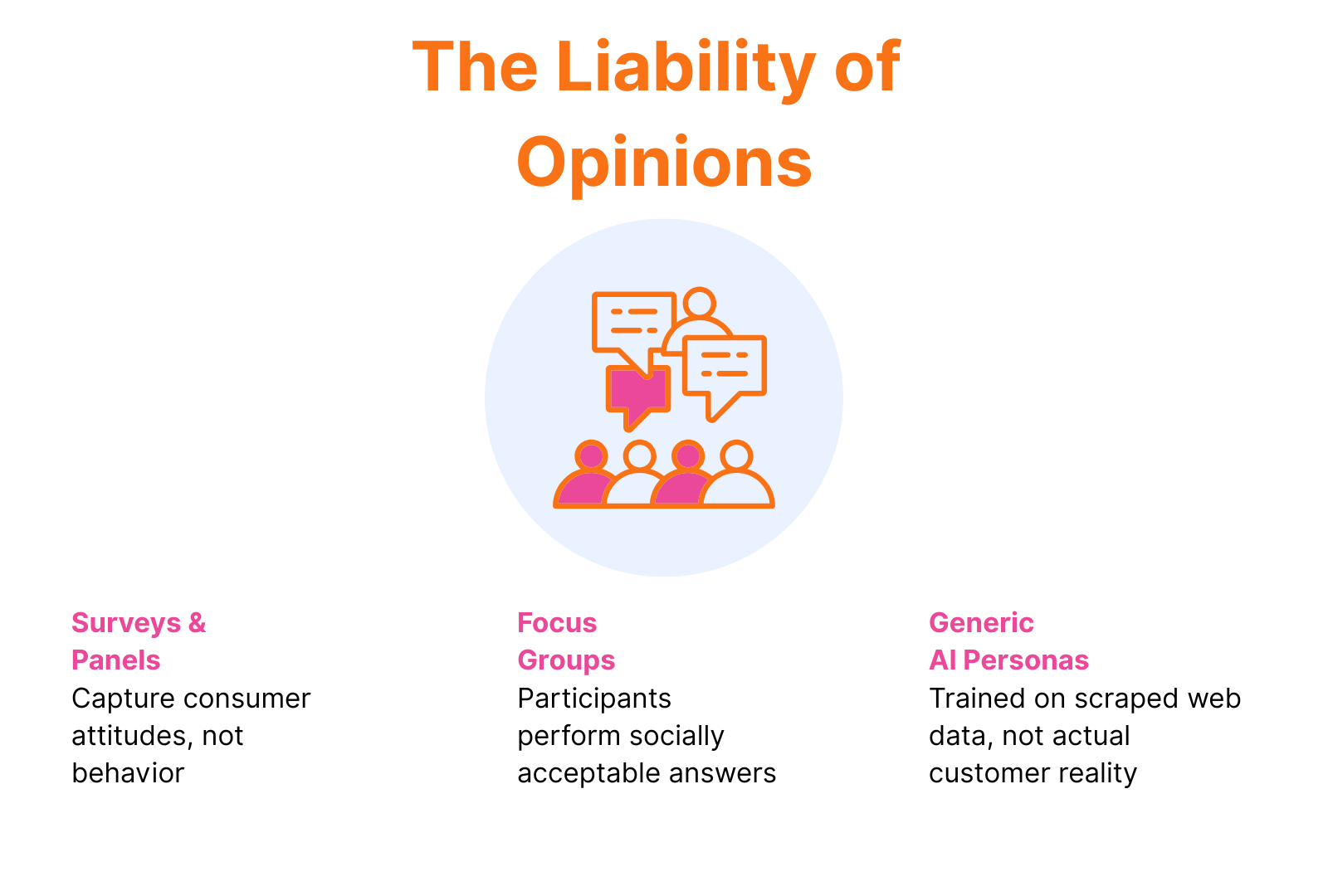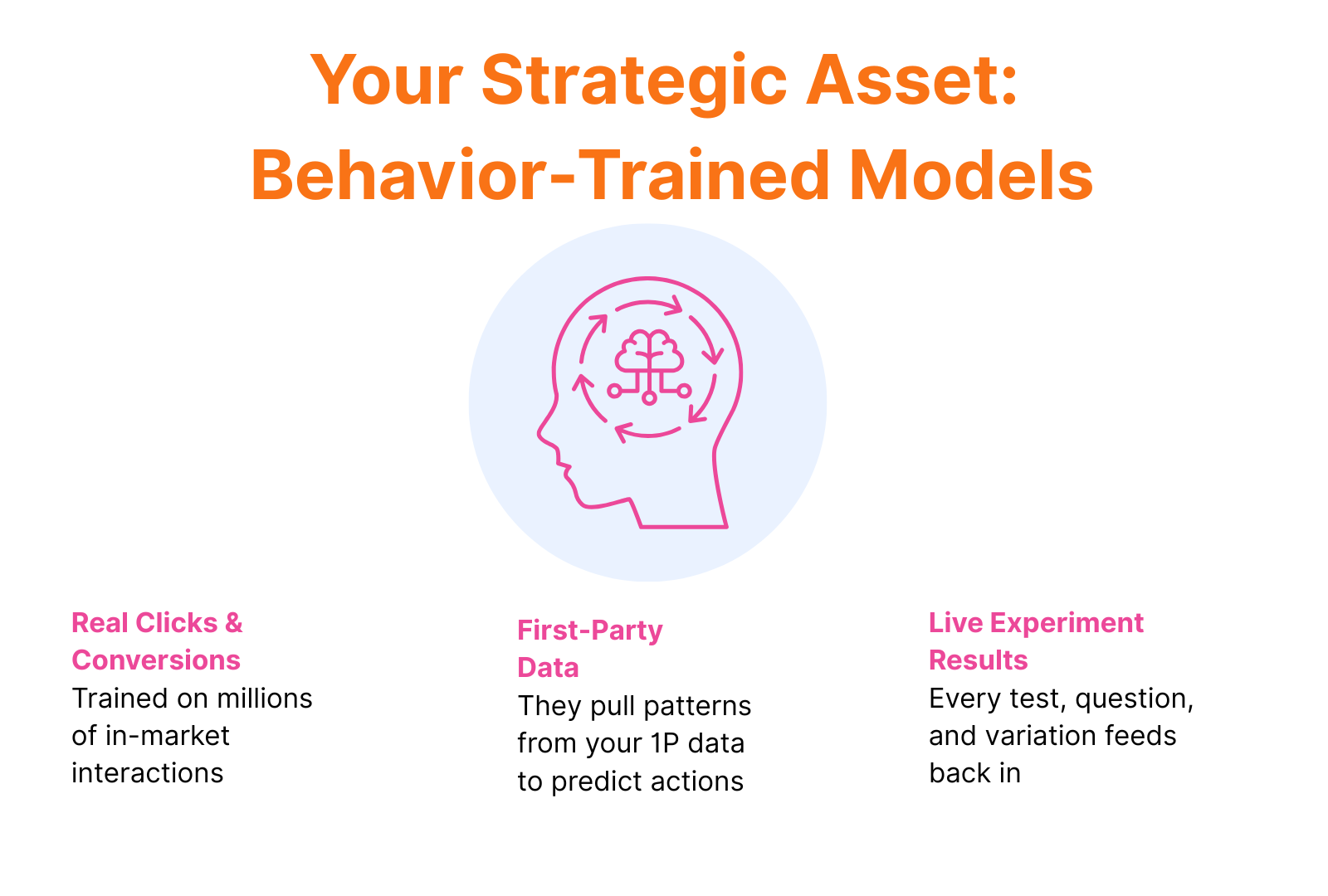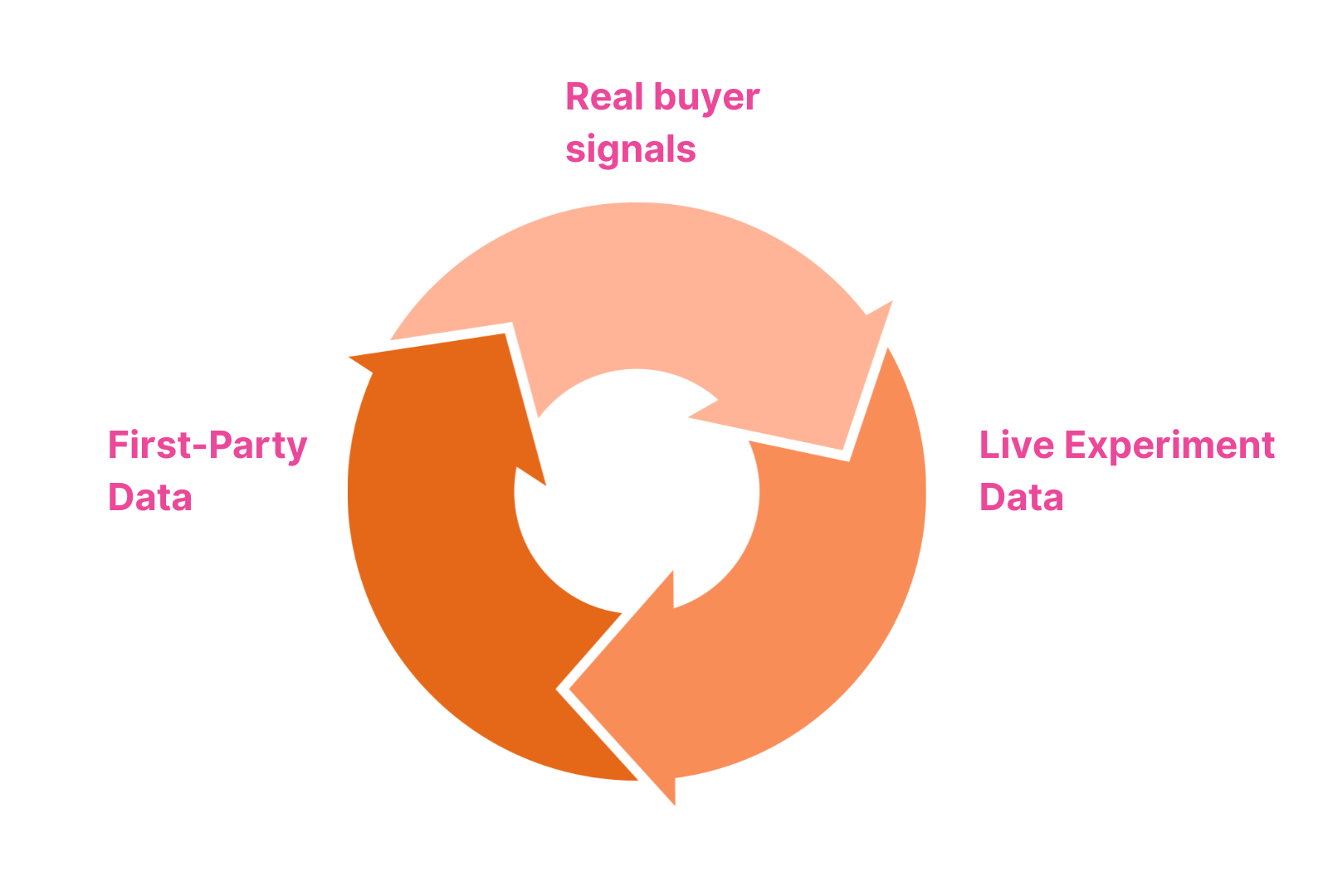By
Kate O'Keeffe
November 21, 2025
•
min read

Every leader has a story of a multi-million-dollar launch that was dead on arrival. The post-mortem always reveals the same uncomfortable truth: the strategy was built on a customer research model trained on opinions, not behavior.
This is the “say-do gap,” and it’s one of the most expensive blind spots in modern business. We act on what customers say in surveys and focus groups, only to discover they do something completely different when real tradeoffs, real friction, and real money are involved.
And the market data makes the cost of this gap impossible to ignore:
If your customer research model is built on opinions, you are making high-stakes decisions with a broken compass. In this blog we’ll break down why behavior-trained models are beating outdated methods of uncovering customer truth, and where to start.
Opinion-based research doesn’t factor intent. It’s built on what people say in controlled settings, not what they do when money and context are real.

A behavior-trained model is built on real market actions rather than opinions or assumptions. Instead of learning from surveys, sentiment, or scraped text, behavior-trained models learn from how people behave when it counts: what they click, what they ignore, what they buy, and how they move through a decision.

It pulls in three live data streams:
Your behavior-trained model learns from real market interactions, your first-party data, and live experiment results. But the real power comes from how you access that intelligence. Teams need a way to interact with it in plain language, to explore insights the same way they would if their customers were sitting across the table.
Heatseeker’s behavior-trained synthetic personas are built on a private, predictive model of your market. They let you test messaging, validate pricing, and experiment with new concepts—delivering behavior-backed answers in minutes. Synthetic personas are trained by key audiences or industries, delivering real conversations built purely on behavioral evidence.
.png)
Every leader should ask:
“How do I know this is accurate?”
You shouldn’t trust generic AI. We don’t.
Behavior-trained synthetic personas deliver high predictive confidence because they are built on real human behavior—not scraped web text, not sentiment, not guesswork.

Every test strengthens the model.
Every insight compounds.
Every decision becomes faster and more confident.
This is the end of insight bottlenecks, and the beginning of decision-making with speed and certainty.
If you are responsible for growth, product, or go-to-market strategy, you can no longer afford to rely on opinion-based models. The risk is too high, the market is too fast, and the tools have evolved.
Behavior-trained synthetic personas show you how real buyers will act before you spend a dollar, turning uncertainty into competitive advantage.
Your biggest risk used to be not knowing your customer.
Now it’s relying on a model that was never based on their real behavior in the first place.

Every leader has a story of a multi-million-dollar launch that was dead on arrival. The post-mortem always reveals the same uncomfortable truth: the strategy was built on a customer research model trained on opinions, not behavior.
This is the “say-do gap,” and it’s one of the most expensive blind spots in modern business. We act on what customers say in surveys and focus groups, only to discover they do something completely different when real tradeoffs, real friction, and real money are involved.
And the market data makes the cost of this gap impossible to ignore:
If your customer research model is built on opinions, you are making high-stakes decisions with a broken compass. In this blog we’ll break down why behavior-trained models are beating outdated methods of uncovering customer truth, and where to start.
Opinion-based research doesn’t factor intent. It’s built on what people say in controlled settings, not what they do when money and context are real.

A behavior-trained model is built on real market actions rather than opinions or assumptions. Instead of learning from surveys, sentiment, or scraped text, behavior-trained models learn from how people behave when it counts: what they click, what they ignore, what they buy, and how they move through a decision.

It pulls in three live data streams:
Your behavior-trained model learns from real market interactions, your first-party data, and live experiment results. But the real power comes from how you access that intelligence. Teams need a way to interact with it in plain language, to explore insights the same way they would if their customers were sitting across the table.
Heatseeker’s behavior-trained synthetic personas are built on a private, predictive model of your market. They let you test messaging, validate pricing, and experiment with new concepts—delivering behavior-backed answers in minutes. Synthetic personas are trained by key audiences or industries, delivering real conversations built purely on behavioral evidence.
.png)
Every leader should ask:
“How do I know this is accurate?”
You shouldn’t trust generic AI. We don’t.
Behavior-trained synthetic personas deliver high predictive confidence because they are built on real human behavior—not scraped web text, not sentiment, not guesswork.

Every test strengthens the model.
Every insight compounds.
Every decision becomes faster and more confident.
This is the end of insight bottlenecks, and the beginning of decision-making with speed and certainty.
If you are responsible for growth, product, or go-to-market strategy, you can no longer afford to rely on opinion-based models. The risk is too high, the market is too fast, and the tools have evolved.
Behavior-trained synthetic personas show you how real buyers will act before you spend a dollar, turning uncertainty into competitive advantage.
Your biggest risk used to be not knowing your customer.
Now it’s relying on a model that was never based on their real behavior in the first place.

